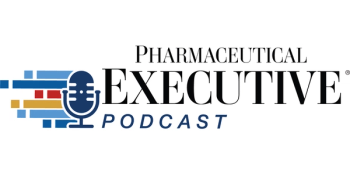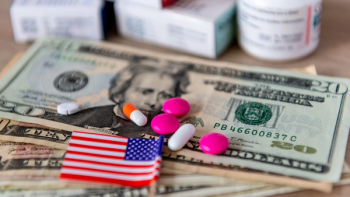
GLP-1 Surge Fuels 10.2% Rise in US Prescription Drug Spending in 2024, ASHP Reports
Weight-loss and diabetes drugs dominated pharmaceutical spending last year, according to a new report by the American Society of Health-System Pharmacists, who warns of tariff-driven supply chain threats and continued growth in clinic drug costs.
Within the past few years, GLP-1 receptor agonists have significantly reshaped the US pharmaceutical market, becoming the fastest-growing drug segment and transforming how clinicians approach chronic conditions, such as diabetes and obesity. A new report by the American Society of Health-System Pharmacists (ASHP) published in the American Journal of Health-System Pharmacy (AJHP) reveals that US prescription drug spending reached $805.9 billion in 2024, representing a 10.2% year-over-year increase. The surge was largely driven by soaring demand for GLP-1s, including semaglutide and tirzepatide, now the top two drugs by overall spending.
While utilization accounted for 7.9% in growth, the introduction of new therapies also played a significant role contributing 2.5%, with drug prices remaining essentially flat with a 0.2% drop. These dynamics reflect broader trends in the healthcare system, in which innovation and expanding indications for high-impact drugs continue to exert pressure on budgets despite stabilized pricing, according to the report.1,2
"GLP-1s are transforming how we treat metabolic disease, but their rise coincides with growing concerns about supply chain vulnerability," said lead report author Eric Tichy, PharmD, MBA, division chair of supply chain management, Mayo Clinic, in a press release. "Tariff-related cost increases could hit the most cost-effective drugs the hardest, and ultimately affect hospitals, clinics, and patients who depend on affordable generics."2
The ASHP report highlights potential risks tied to proposed US tariffs on pharmaceutical ingredients and components sourced from China, raising red flags around future availability and pricing, particularly for generic medications. Analysts warn that such disruptions could exacerbate existing shortages and shift demand toward higher-cost branded alternatives.
To better understand the evolving landscape, researchers evaluated historical drug purchasing patterns using IQVIA’s National Sales Perspectives database. The analysis included key factors expected to shape 2025 spending, such as new product approvals, patent expirations, and potential policy or legislative developments. Special attention was given to high-impact categories, including biosimilars, oncology, endocrine therapies, generics, specialty medications, and vaccines.
Spending growth varied by care setting. Clinics experienced a notable 14.4% increase in drug expenditures, totaling $158.2 billion in 2024, driven primarily by greater utilization with only modest contributions from new products. Nonfederal hospitals, by contrast, saw a more modest 4.9% rise to $39 billion, with incremental growth spread across price, volume, and new drug factors.
Looking ahead, US pharmaceutical spending is projected to grow another 9%-11% in 2025. Clinic expenditures are expected to rise 11%-13%, while hospital spending is forecasted to increase 2%-4%. These projections reflect several ongoing market forces, including the continued expansion of oncology drug use, the launch of biosimilars and generics following key patent expirations, and declining vaccine spending amid increased antivaccine sentiment.1,2
According to IQVIA’s ‘Understanding the Use of Medicines in the U.S. 2025’ institute report, total prescription medicine use increased by 1.7% in 2024. Additionally, net prices on the US market grew 11.4%, up from 4.9% in 2023. Notably, IQVIA also found that more than half of new prescriptions for novel medicines went unfilled due to benefit design and high costs.3
"As medication spending continues to shape the financial and operational realities of healthcare, this report—along with AJHP's quarterly medication pipeline updates—offers pharmacy and health-system leaders the insights they need for effective planning," said Daniel J. Cobaugh, PharmD, FAACT, DABAT, SVP, professional development, publishing, ASHP, editor-in-chief, AJHP, in the press release. "It brings clarity to complex trends and supports informed, forward-looking decision-making."
References
1. U.S. Drug Spending Up 10.2% in 2024, with Weight Loss Drugs Remaining Top Driver. PR Newswire. May 9, 2025. Accessed May 12, 2025. https://prnmedia.prnewswire.com/news-releases/us-drug-spending-up-10-2-in-2024--with-weight-loss-drugs-remaining-top-driver-302451209.html
2. National trends in prescription drug expenditures and projections for 2025. AJHP. April 23, 2025. Accessed May 12, 2025. https://academic.oup.com/ajhp/advance-article-abstract/doi/10.1093/ajhp/zxaf092/8117945?redirectedFrom=fulltext&login=false#no-access-message
3. Understanding the Use of Medicines in the U.S. 2025. IQVIA. April 30, 2025. Accessed May 12, 2025.
Newsletter
Lead with insight with the Pharmaceutical Executive newsletter, featuring strategic analysis, leadership trends, and market intelligence for biopharma decision-makers.



